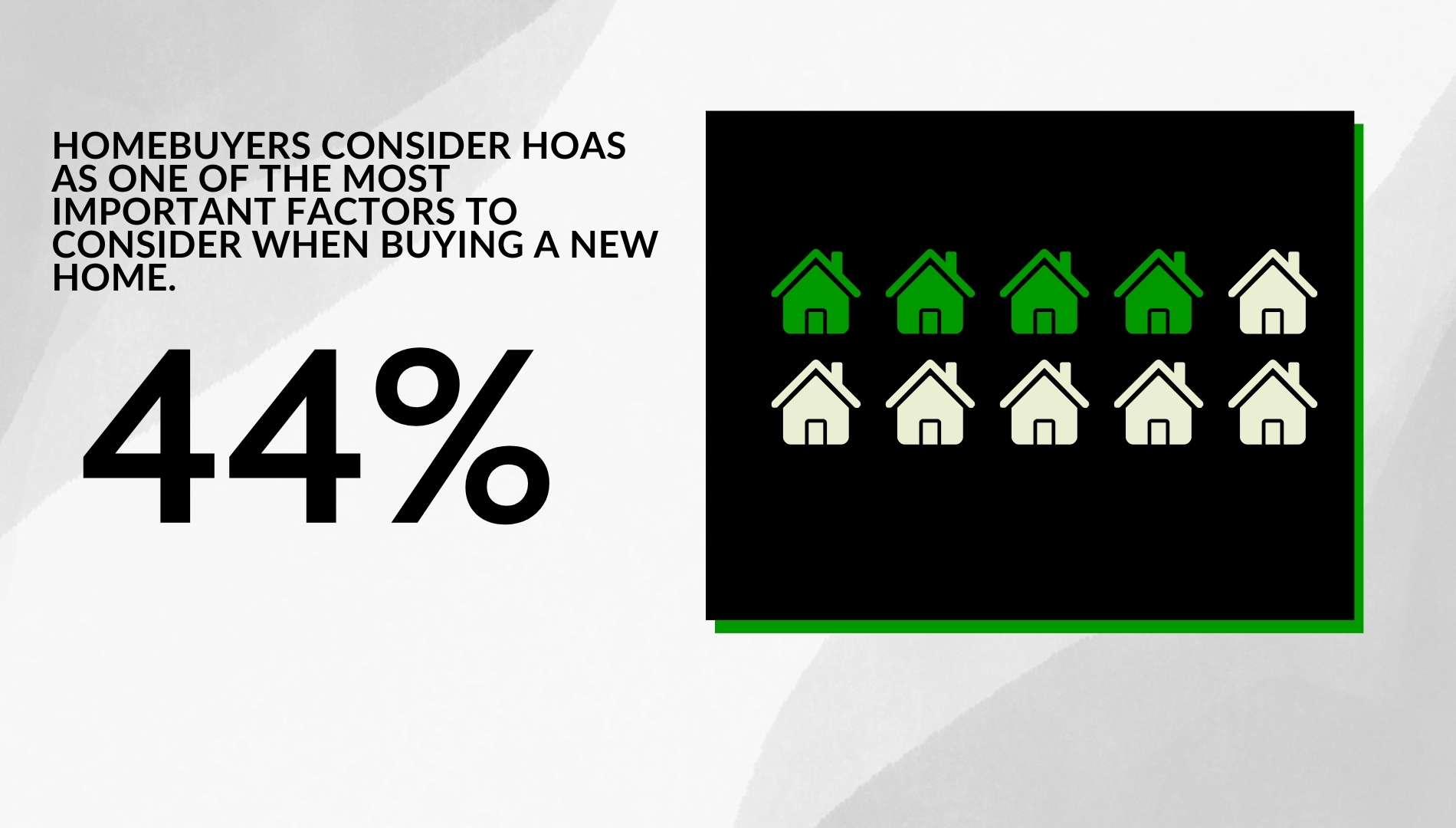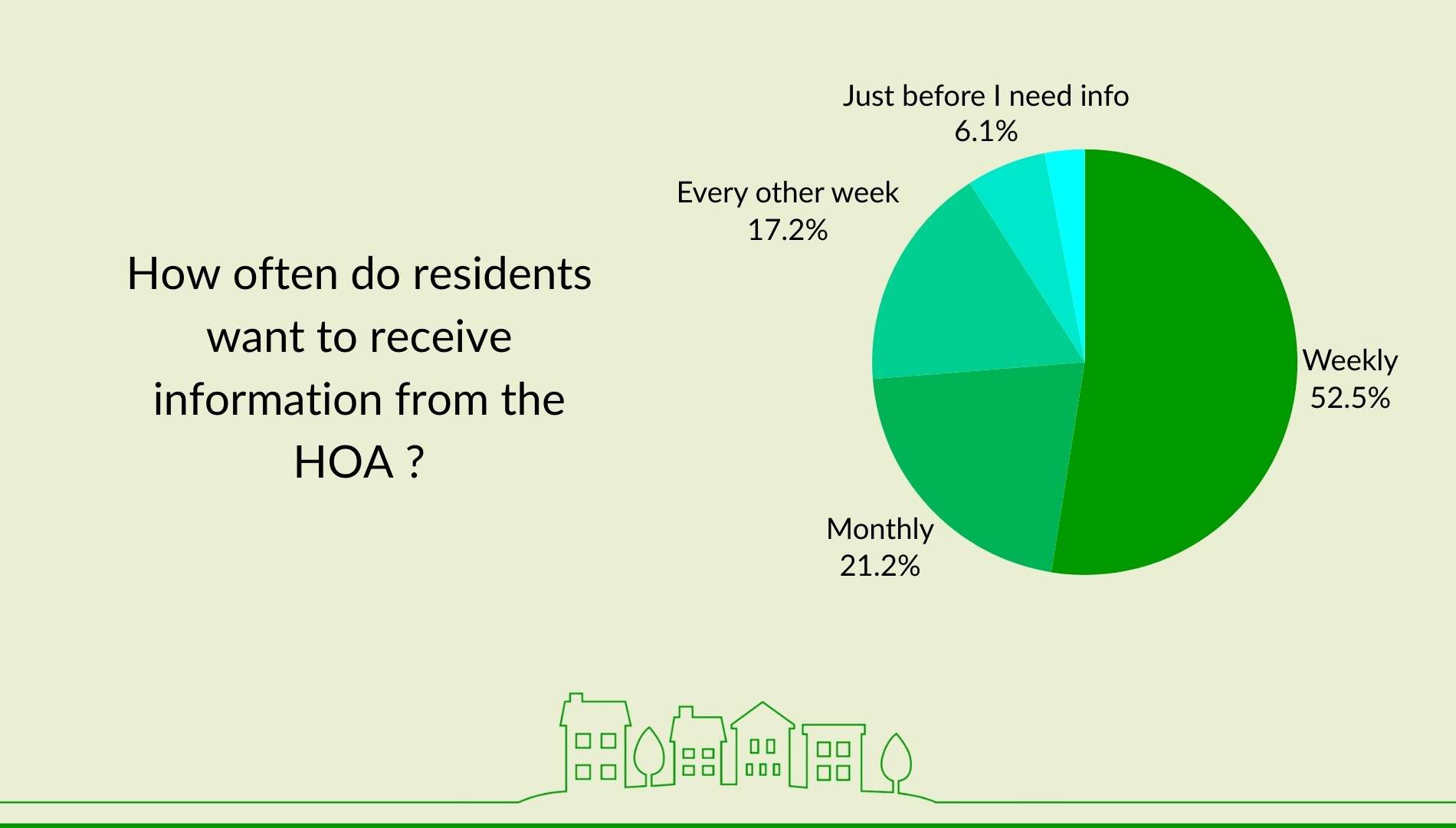HOA Communication
In the world of Homeowners Associations (HOAs), clear and effective communication isn't just beneficial—it's essential. Whether it's disseminating important updates, fostering community engagement, or managing the day-to-day operations of the association, the way information flows between the HOA board, management, and residents can significantly impact the harmony and functionality of the community.
This guide is designed to be your comprehensive resource on all things related to HOA communication. From understanding the basics and overcoming common challenges to leveraging the latest digital tools and strategies for enhancing engagement, we'll cover everything you need to know to make your HOA communication as effective as possible. Whether you're an HOA board member looking to improve your community's communication strategy or a resident eager to understand how better communication can improve your community, this guide has something for you.
- Understanding HOA Communication
- Key Components of Effective HOA Communication
- Communication Tools for HOAs
- Enhancing Resident Engagement Through Communication
- Managing Conflict with Effective Communication
- Best Practices for HOA Communication Plans
- The Future of HOA Communication
- Resources and Tools

Understanding HOA Communication
Definition of HOA Communication
HOA communication encompasses all the ways in which HOA boards, management companies, and residents share information, discuss community issues, and make decisions collectively. This can include formal meetings, newsletters, emails, digital platforms like Neighborhood.Online, and even casual conversations. Effective HOA communication ensures that all members of the community are informed, engaged, and have a voice in the governance of their community.
Importance of Effective Communication in HOAs
Effective communication within an HOA is crucial for several reasons. It ensures that residents are well-informed about rules, regulations, and changes within the community. It also plays a key role in building a sense of community, as it opens up channels for feedback and participation, making residents feel valued and heard. Additionally, transparent and timely communication can prevent misunderstandings and conflicts, facilitating smoother operations and contributing to the overall wellbeing of the community.
Challenges Faced in HOA Communication
Despite its importance, effective communication in HOAs can be challenging. One of the primary obstacles is ensuring that messages reach all members of the community, considering the diverse preferences for receiving information. Additionally, legal requirements for certain types of communication can complicate the process, requiring careful attention to detail and documentation. Miscommunication or lack of communication can lead to misunderstandings, frustration, and conflict among residents, undermining trust in the HOA board and management. Overcoming these challenges requires a strategic approach, tailored tools, and a commitment to openness and transparency.
Key Components of Effective HOA Communication
Effective communication within a Homeowners Association (HOA) is not just about sharing information—it's about building trust, ensuring transparency, and fostering a sense of community among residents. To achieve this, there are several key components that HOAs need to consider and implement in their communication strategies. This section delves into the crucial aspects of transparency, frequency and timing, the role of technology, and the legal considerations that underpin effective HOA communication.
Transparency in Communication
Transparency is the cornerstone of trust between the HOA board and the community members. It involves open and honest communication about decisions, financial statuses, policy changes, and any issues affecting the community. Effective transparency can be achieved by:
- Making Information Accessible: Ensure that all community documents, including meeting minutes, financial reports, and governing documents, are easily accessible to all members, preferably through a centralized digital platform.
- Clear Decision-Making Processes: Communicate how decisions are made within the HOA, including how input from residents is considered. This can help demystify the board's actions and encourage more participation from the community.
Frequency and Timing of Communication

The frequency and timing of communication can significantly impact how information is received and perceived by the community. Too much communication can overwhelm residents, while too little can lead to feelings of exclusion or misinformation. To strike the right balance:
- Regular Updates: Establish a regular cadence for updates, whether through monthly newsletters, weekly emails, or regular postings on digital platforms.
- Timely Announcements: Ensure that important information, especially that which affects the entire community or requires immediate attention, is communicated promptly.
The Role of Technology in Modern HOA Communication
Technology plays a pivotal role in modernizing HOA communication, making it more efficient, engaging, and accessible. Utilizing digital tools can enhance communication through:
- Digital Platforms: Platforms like Neighborhood.Online provide a centralized space for announcements, document sharing, and community discussions.
- Social Media and Apps: Use social media channels and mobile apps to reach residents where they are most active, offering updates and fostering community engagement.
- Online Meetings: Virtual meeting tools can increase participation in HOA meetings by providing a convenient option for those who cannot attend in person.
Legal Considerations and Compliance
Navigating the legal landscape is crucial for HOA communication. Compliance with local laws and regulations ensures that the HOA operates within legal boundaries and protects the association and its members. Key legal considerations include:
- Privacy Laws: Understand and comply with privacy laws related to sharing personal information and communication within the community.
- Record-Keeping Requirements: Adhere to state and federal laws regarding the retention of HOA documents and communication records.
- Notification Requirements: Be aware of legal requirements for notifying residents about meetings, elections, and other significant events.
By focusing on these key components, HOAs can develop and implement a communication strategy that not only meets the needs of their community but also enhances the overall living experience for its members. Effective communication fosters a transparent, engaged, and well-informed community, which is essential for the success and harmony of any HOA.
Communication Tools for HOAs
Effective communication in a Homeowners Association (HOA) hinges on the use of diverse tools and channels to reach all members of the community. These tools can be broadly categorized into digital platforms, traditional methods, and direct communication techniques. Each category serves unique purposes and reaches different audiences within the HOA, ensuring that all residents are informed, engaged, and have the opportunity to participate in community affairs.
Digital Platforms
Overview of Neighborhood.Online and its benefits
Neighborhood.Online is a comprehensive digital platform designed specifically for HOA communities. It facilitates a wide range of communication needs, from announcements and document sharing to event planning and community discussions. Key benefits include:
- Centralized Communication: A single platform where residents can find all the information they need, from board meeting minutes to upcoming event details.
- Increased Engagement: Features like forums and polls encourage residents to share their opinions and participate in community decisions.
- Accessibility: Residents can access information anytime, anywhere, which is especially beneficial for those with busy schedules or who are away from the community.
Websites and HOA Portals
Many HOAs develop their own websites or portals, which serve as a hub for community information, resources, and contacts. These platforms can offer:
- Customization: Tailored content that addresses the specific needs and interests of the community.
- Self-Service Options: Online payment systems, service request forms, and reservation systems for community amenities.
Social Media Channels
Social media channels like Facebook, Twitter, and Instagram can complement an HOA's communication strategy by:
- Offering real-time updates and reminders.
- Providing a platform for informal interactions and community building.
- Enhancing visibility for community events and initiatives.
Traditional Communication Methods
HOA Newsletters (Email and Printed)
The Power of an HOA Newsletter: Connecting Your Community
Newsletters, whether distributed via email or in print, remain a staple in HOA communication, useful for:
- Monthly or quarterly updates on community affairs, upcoming events, and board decisions.
- Highlighting resident achievements, welcoming new members, and sharing community stories.
Bulletin Boards
Physical bulletin boards located in common areas can capture the attention of residents who may not regularly check digital platforms or emails, serving as a:
- Reminder for upcoming meetings and events.
- Space for posting notices, community guidelines, and emergency information.
Meetings (Annual, Quarterly, Emergency)
Regularly scheduled meetings, as well as emergency meetings, are essential for:
- Face-to-face communication and discussion of community matters.
- Voting on important issues and electing board members.
Direct Communication
SMS and Messaging Apps
Text messages and messaging apps provide a direct and immediate way to reach residents with:
- Urgent alerts and reminders.
- Quick polls and feedback requests.
Email Blasts
For sending important announcements or updates to the entire community at once, email blasts are effective for:
- Detailing changes in community policies or management.
- Distributing HOA Newsletters (Email and Printed) or links to important resources.
Phone Calls
Although more time-consuming, phone calls are invaluable for:
- Personalized communication with residents who prefer or require direct contact.
- Discussing sensitive issues or emergency situations where immediate feedback is needed.
By leveraging a mix of these communication tools, HOAs can ensure that all residents are well-informed, engaged, and feel a part of their community. Each tool has its strengths and can be used strategically to enhance overall communication within the HOA.
Enhancing Resident Engagement Through Communication

Engagement within a Homeowners Association (HOA) extends beyond simply informing residents about what is happening in the community. It's about creating an environment where residents feel valued, heard, and motivated to participate actively in community life. Enhancing resident engagement through communication involves strategic efforts to increase participation, organize community events effectively, and implement HOA Survey to streamline community feedback. Here’s how to achieve these goals:
Strategies for Increasing Participation
-
Personalized Communication: Tailor communication to meet the interests and needs of different resident groups. Personalization can make residents feel more directly involved and increase the likelihood of their participation.
-
Highlighting the Impact: Clearly communicate how resident involvement makes a difference in the community. Showcasing the outcomes of participation can motivate others to get involved.
-
Incentivizing Participation: Consider offering incentives for participation, such as recognition programs, small rewards, or highlighting active members in community newsletters.
Organizing Community Events
Community events are a cornerstone of engagement in HOAs, serving as an opportunity for residents to connect, share experiences, and build stronger community ties. Effective organization and communication are key to ensuring these events are successful and well-attended:
-
Early and Clear Communication: Announce events well in advance using multiple communication channels to reach as broad an audience as possible. Provide clear details about the event’s purpose, date, time, and location.
-
Engaging Content: Use engaging content to promote events, including visuals, testimonials from past events, and highlights of what to expect. Social media platforms are great for creating buzz and excitement.
-
Feedback and Improvement: After each event, gather HOA Feedback from attendees to learn what worked well and what could be improved. This shows that you value their input and are committed to enhancing community experiences.
Surveys and Feedback Mechanisms

Surveys and feedback mechanisms are critical for understanding resident needs, preferences, and areas of concern. They also serve as a tool for residents to voice their opinions and contribute to decision-making processes:
-
Regular Surveys: Conduct regular surveys to gauge resident satisfaction, gather opinions on proposed changes, and identify areas for improvement. Ensure surveys are concise and easy to complete to encourage higher response rates.
-
Feedback Channels: Establish clear and accessible channels for feedback, such as suggestion boxes (both physical and digital), dedicated email addresses, or online forums. Communicate how HOA Feedback will be used and follow up on common suggestions or concerns.
-
Transparency in Responses: Be transparent about the feedback received and the actions taken in response. Sharing updates on how resident input has influenced decisions or policy changes fosters a sense of ownership and trust in the HOA management.
By focusing on these strategies, HOAs can significantly enhance resident engagement through communication. Creating a culture of open dialogue, recognition, and community involvement not only strengthens the sense of community but also leads to a more harmonious and fulfilling living environment for all residents.
Managing Conflict with Effective Communication
Conflict within a Homeowners Association (HOA) is almost inevitable, given the diversity of personalities, expectations, and interests among residents. However, effective communication strategies can significantly mitigate Frustrated Homeowners and lead to constructive resolutions that strengthen the community. This section explores techniques for addressing resident concerns, mediation and resolution strategies, and real-world case studies of successful conflict resolution.
Techniques for Addressing Resident Concerns
-
Proactive Listening: Encourage board members and management to actively listen to residents' concerns, demonstrating empathy and understanding. This approach can de-escalate tensions and make residents feel valued and heard.
-
Clear and Direct Communication: Address concerns directly with clear, concise communication. Avoid jargon and ensure that explanations are easily understandable to prevent further misunderstandings.
-
Follow-Up: After addressing a concern, follow up with the involved parties to ensure that the resolution is satisfactory and to demonstrate ongoing commitment to resident welfare.
Mediation and Resolution Strategies
-
Neutral Mediation: In cases where direct communication does not resolve the conflict, involve a neutral third party to mediate. This mediator can help facilitate a productive dialogue and assist in finding a mutually acceptable resolution.
-
Establishing Clear Guidelines: Develop and communicate clear guidelines for conflict resolution within the community. Knowing the process can help manage expectations and provide a structured approach to resolving disputes.
-
Emphasizing Community Well-being: Remind all parties involved of the common goal: the well-being and harmony of the community. This perspective can help shift the focus from individual grievances to collective solutions.
Best Practices for HOA Communication Plans
Creating an effective communication plan is essential for any Homeowners Association (HOA) aiming to foster a vibrant, informed, and engaged community. A well-crafted communication plan not only addresses the current needs of the community but also anticipates future challenges, ensuring that the HOA remains responsive and adaptable. This section outlines best practices for developing a comprehensive communication strategy, customizing communication to meet community needs, and training HOA board members on effective communication techniques.
Developing a Comprehensive Communication Strategy
-
Assess Communication Needs: Begin by assessing the community's current communication practices and identifying areas for improvement. Consider the diversity of communication preferences among residents to ensure inclusivity.
-
Set Clear Objectives: Define clear objectives for what the communication plan aims to achieve, such as improving resident engagement, enhancing transparency, or reducing conflicts. These objectives will guide the selection of communication tools and methods.
-
Choose Appropriate Channels: Select communication channels that best fit the community's needs and preferences. Incorporate a mix of digital platforms, traditional methods, and direct communication to reach all residents effectively.
-
Establish a Communication Schedule: Create a schedule that outlines when and how often communication will occur. This includes regular updates, meeting notices, and emergency communications, ensuring consistency and reliability in messaging.
Customizing Communication to Meet Community Needs
-
Segment Your Audience: Recognize that different segments of the community may have unique communication preferences. Tailor messages and choose channels accordingly to increase engagement and effectiveness.
-
Feedback Loops: Incorporate mechanisms for residents to provide feedback on communication effectiveness and suggest improvements. This can help refine the communication strategy over time to better meet community needs.
-
Cultural Sensitivity: Be mindful of the cultural diversity within the community. Ensure that communication is respectful, inclusive, and accessible to all residents, potentially offering translations for non-English speakers.
Training for HOA Board Members on Effective Communication
-
Communication Workshops: Organize workshops or training sessions for HOA board members focusing on communication skills, conflict resolution, and public speaking to enhance their effectiveness as community leaders.
-
Best Practices Sharing: Encourage board members to share successful communication strategies and learn from each other. This can foster a culture of continuous improvement and innovation in communication practices.
-
Professional Development: Consider investing in professional development opportunities for board members, such as conferences and seminars focused on community management and communication.
By adhering to these best practices, HOAs can develop a robust communication plan that not only meets the current needs of the community but also adapts to future changes. Effective communication is the backbone of a harmonious and engaged community, and by investing in comprehensive planning, customization, and training, HOAs can significantly enhance the quality of life for all residents.
The Future of HOA Communication
As technology evolves and community expectations shift, the future of Homeowners Association (HOA) communication is poised for significant changes. Staying ahead of these trends is crucial for HOAs to continue engaging residents effectively, managing community affairs efficiently, and fostering a sense of belonging among community members. This section explores emerging trends in digital communication, the potential role of artificial intelligence (AI) and automation in community management, and predictions for how HOA communication may evolve in the coming years.
Emerging Trends in Digital Communication
-
Increased Use of Mobile Apps: Mobile apps dedicated to HOA management and communication are becoming more prevalent, offering residents instant access to information, services, and community forums directly from their smartphones.
-
Virtual Reality (VR) for Community Engagement: VR technology could be used for virtual tours of community facilities, interactive planning of community spaces, or even virtual attendance at HOA meetings, making participation more accessible and engaging.
-
Enhanced Personalization: Advanced data analytics can enable more personalized communication, tailoring messages and updates to the specific interests and needs of individual residents, thus increasing engagement and satisfaction.
The Role of AI and Automation in Community Management
-
Automated Customer Service: AI-powered chatbots and virtual assistants can provide residents with 24/7 access to information and support, answering common questions and facilitating service requests without human intervention.
-
Predictive Maintenance: AI can analyze data from community facilities and infrastructure to predict maintenance needs before issues arise, enabling proactive management and reducing downtime and repair costs.
-
Efficient Document Handling and Compliance: Automation tools can streamline document management, from archiving meeting minutes to ensuring compliance with legal requirements, reducing the administrative burden on HOA boards.
Predictions for the Future of HOA Engagement
-
Greater Community Collaboration: Technology will enable more democratic and collaborative decision-making processes, with residents having a greater say in community affairs through online polls, forums, and virtual town halls.
-
Seamless Integration of Services: Integration of HOA communication platforms with other services, such as local government services or utility management, could provide residents with a seamless and convenient experience.
-
Focus on Sustainability and Well-being: Communication strategies will increasingly focus on promoting sustainability initiatives within the community and supporting the well-being of residents, reflecting broader societal trends.
The future of HOA communication is dynamic and exciting, with technology playing a pivotal role in shaping how communities connect, share information, and make decisions. By embracing these emerging trends and preparing for the changes they bring, HOAs can ensure that they remain effective in meeting the needs of their communities, enhancing the quality of life for all residents.
Resources and Tools
In the landscape of HOA communication, having the right resources and tools at your disposal can make a significant difference in the effectiveness and efficiency of your communication strategy. This section aims to provide HOAs with a curated list of recommended digital communication tools, templates for newsletters, announcements, and surveys, along with links to legal resources and guidelines for compliance. These resources are designed to support HOAs in their efforts to foster a vibrant, informed, and engaged community.
- Free HOA Newsletter Templates to Keep Your Community Engaged
- Innovative Newsletter Ideas for Homeowner Associations
Templates
- Newsletter Templates: Canva and Microsoft Office offer a variety of customizable templates for creating professional-looking newsletters.
- Announcement and Meeting Notice Templates: Templates that can be customized for various types of community announcements and meeting notices to ensure clarity and consistency.
- Survey Templates: Tools like SurveyMonkey and Google Forms provide templates and easy-to-use interfaces for creating surveys and collecting resident feedback.
-
Unauthorized Parking Notice Template
- For addressing vehicles parked in restricted areas or excessive vehicles on the property.
-
Noise Complaint Notice Template
- To communicate with residents about excessive noise levels, especially during restricted hours.
-
Pet Policy Violation Notice Template
- For situations involving more pets than allowed, unpermitted pet types, or failure to adhere to leash and waste disposal rules.
Legal Resources and Guidelines
- State and Federal Compliance Guides: Websites such as HOA-USA provide resources and links to state-specific laws affecting HOAs.
- Privacy and Data Protection: Resources like the Privacy Rights Clearinghouse offer guidelines on protecting resident privacy and complying with data protection laws.
Conclusion
Effective communication is the cornerstone of a successful Homeowners Association (HOA). It not only ensures that residents are well-informed and engaged but also fosters a sense of community and belonging. As we've explored throughout this guide, from understanding the basics of HOA communication to embracing the latest digital tools and trends, it's clear that the approach to communication must be dynamic, multifaceted, and inclusive.
The future of HOA communication looks promising, with advances in technology offering new ways to connect and engage with residents. However, the human element remains crucial. Transparency, empathy, and active listening are irreplaceable components of effective communication strategies. By integrating these timeless principles with innovative tools and practices, HOAs can navigate the challenges of today and tomorrow, creating vibrant, harmonious communities where residents feel truly at home.
As we look ahead, let's remember that the goal of HOA communication is not just to inform but to connect and engage. By prioritizing clear, consistent, and meaningful communication, HOAs can build strong, resilient communities that are prepared to face the future together.
Sources:
-
Cox, J. (2023, October 31). What the rise of homeowners associations means for Americans. CNBC. Retrieved from https://www.cnbc.com/2023/10/31/what-the-rise-of-homeowners-associations-means-for-americans.html
-
DoorLoop. (n.d.). HOA statistics. Retrieved from https://www.doorloop.com/blog/hoa-statistics
-
Cedar Management Group. (n.d.). Poor communication in HOA. Cedar Management Group. Retrieved from https://www.cedarmanagementgroup.com/poor-communication-in-hoa/
-
Pilgrim, D. (2018, November 9). Honest survey: Young homeowners hate HOAs. Independent American Communities. Retrieved from https://independentamericancommunities.com/2018/11/09/honest-survey-young-homeowners-hate-hoas/
-
Inman. (2010, December 29). 5 surprising facts about HOA defaults. Retrieved from https://www.inman.com/2010/12/29/5-surprising-facts-about-hoa-defaults/
-
HAR.com. (n.d.). Homeowners Associations or HOAs have long been a source of controversy and frustration for many residents. Critics argue that these volunteer boards, which oversee hundreds of thousands of homes in the [U.S.] and across the country, operate in a realm of-. Retrieved from https://www.har.com/blog_108383_homeowners-associations-or-hoas-have-long-been-a-source-of-controversy-and-frustration-for-many-residents-critics-argue-that-these-volunteer-boards-which-oversee-hundreds-of-thousands-of-homes-in-the-and-across-the-country-operate-in-a-realm-of-
-
Pilgrim, D. (2022, December 6). HOA risks: The triple threat of homeowners associations. Independent American Communities. Retrieved from https://independentamericancommunities.com/2022/12/06/hoa-risks-the-triple-threat-of-homeowners-associations/
-
Credible. (n.d.). Homeowners association. Retrieved from https://www.credible.com/blog/mortgages/homeowners-association/
-
TVLife. (2019, March 25). HOA Survey results for public. Retrieved from https://tvlife.memberclicks.net/assets/HOA/Documents/HOA%20Survey%20results%20for%20public_032519.pdf







